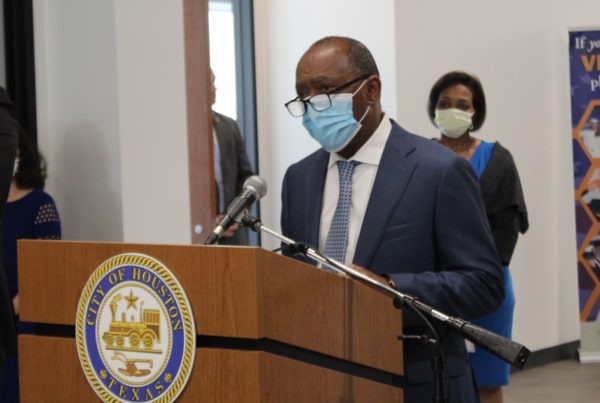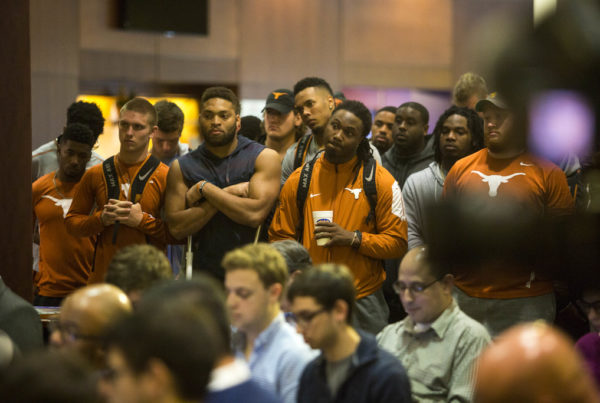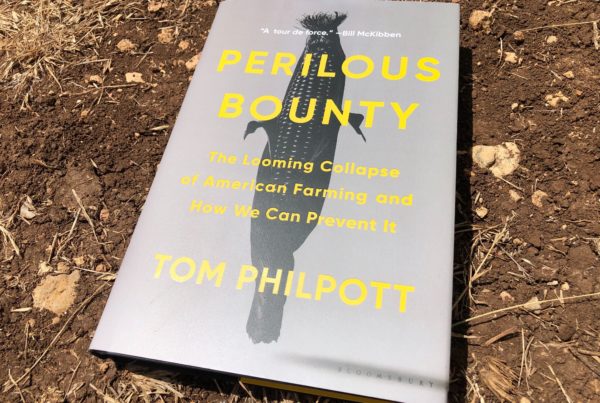From KUT:
Austin Country Flea Market is a place where you can find everything you need — and maybe a few things you didn’t know you needed.
Walking down the aisles of the market, or la pulga, you see colorful selections of embroidered Mexican clothing. Pivot to your right and come face-to-face with a collection of children’s backpacks and toys, or walk a little farther and find an assortment of household tools. All the while, the smell of roasted corn and turkey legs lingers in the air.
And of course there’s the music.
“It really made an impression on me. It really made me fall in love with my culture,” said Alan Garcia, who grew up going to the market. “All the time I spent there around Tejano music, there was exposure to hip-hop music, breakdancing, things that really appealed to me.”
But the market is quieter these days. The live music’s been put on pause. Fewer customers are coming out to shop. After almost four decades of operating off Highway 290, Austin Country Flea Market is on the verge of becoming the latest local landmark forced to close its doors amid the coronavirus pandemic.
Last month, the market’s owners made the decision to shut down and gave vendors a two-week notice. A Facebook post about the looming closure was shared more than 1,600 times. Now, the owners are giving vendors an additional two weeks to drum up business, after which they’ll reevaluate the decision to close or not.
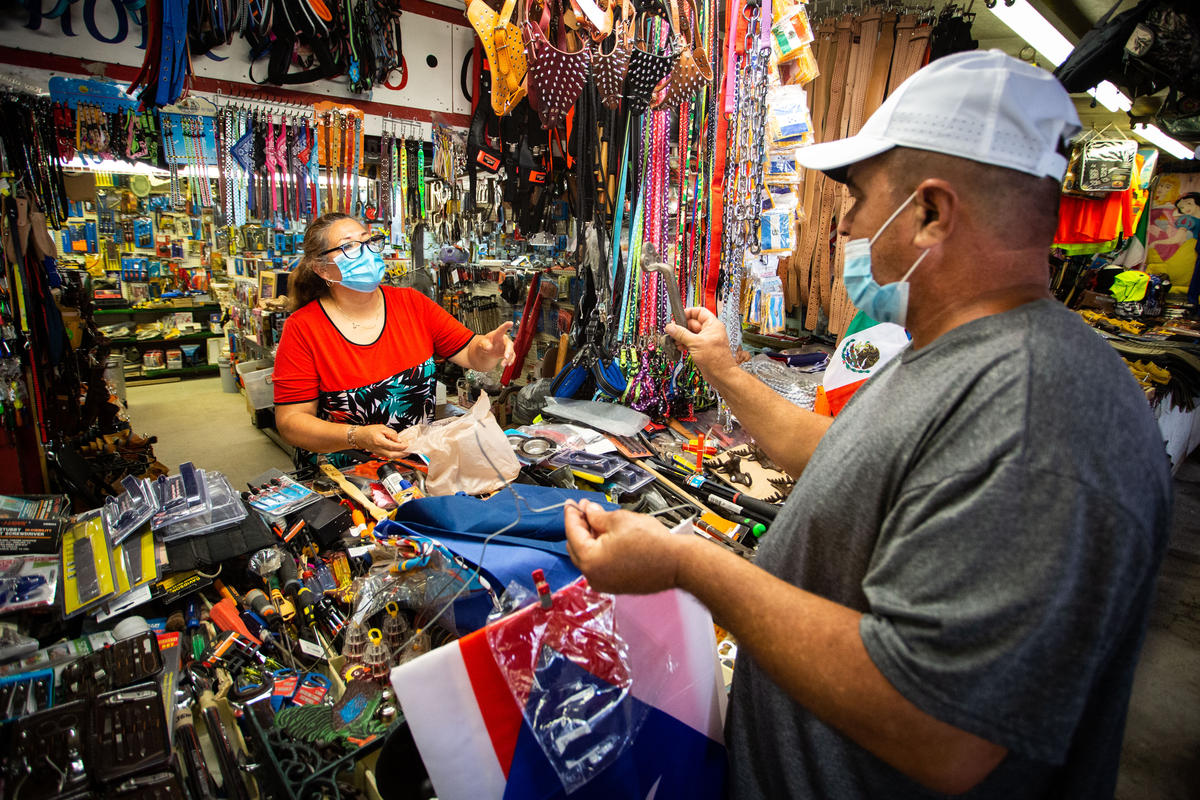
Vendor Amparo Palacios speaks with a customer at Austin Country Flea Market.
“Because it’s been just kind of existing on the fringes of the city, it’s been a big immigrant space — a hangout spot for recently arrived immigrants,” Alan said. “I feel like it’s gotten less attention, but it’s such an important marketplace for everyone, for families, for socializing.”
‘It’s a melting pot’
Alan runs ATX Barrio Archive, an Instagram account chronicling the history of Black and Brown people and neighborhoods in the city. The account shares flyers, newspaper clippings and personal videos and photos documenting parts of Austin that are being erased by gentrification or just the passing of time.
For Alan, the market has always been a family affair. His parents emigrated from Mexico City in the 1980s. At the flea market, he found community: the Puerto Rican family with whom his family shared recipes and stories, the vendor from Iran who set up shop repairing computers. Being exposed to a multitude of different cultures spurred Alan to work as an archivist focusing on the city’s history and its neighborhood landmarks.
Alan’s father, Alejandro Garcia, has been working weekends at the market since the mid-90s. He sold video and audio equipment, as well as other electronics and clothing throughout his time as a vendor. He said many of the families who made a living working at the market brought their kids along, like he did with Alan.
“The whole community goes there, not just the immigrant community,” Alejandro said. “It’s a mix. It’s a melting pot.”
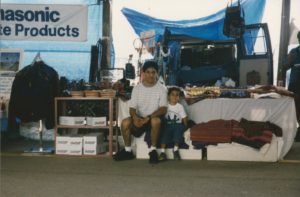
Alan and his father Alejandro at their booth in the mid-1990s.
For Alejandro, weekends at the market have a small-town feeling. He would check in with parents and children, some of whom have gone on to own their own businesses at the market.
“[People] come from small communities in Mexico where the market day is Sunday, and they meet there and buy everything they need for the week,” he said. “That custom was translated to the flea market.”
A fire in 2009 destroyed about half of the market. After that, Alejandro stopped depending as much on sales there and started assisting local businesses with their audio and video needs.
Emma Hernandez was also working at the market when that fire started almost 11 years ago.
“Everything I had burned. My entire [booth] burned and all my merchandise,” she said. “I lost more than $60,000. I didn’t recoup not one peso, and I had to start from the ground up.”
She spent her first weekend in Austin after emigrating from Mexico working at the market. More than 25 years later, Emma is still working weekends, selling traditional Mexican clothing, like huarache sandals.
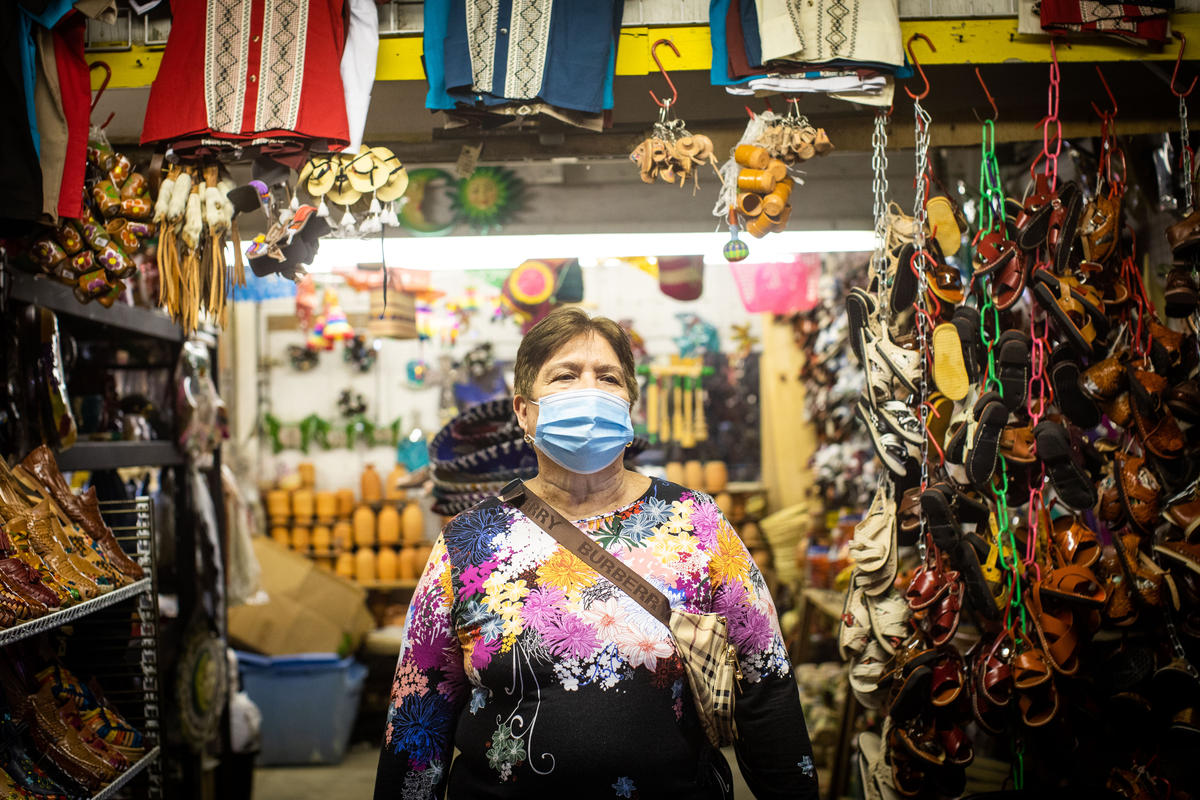
Emma Hernandez has worked at the market for more than 25 years.
She said she’s gone through so much during her time there, including a fight against skin cancer about six years ago. Emma said she feels closing is not fair to the families who make their living there. She has four trailers full of merchandise and wonders: Where am I going to take them?
“We need them to keep the market open because it’s become a tradition for people to come to this flea market for years and years, through the cold days and the hot days. We never miss a day,” she said. “Thank God we’ve survived here. This is work. It’s only two days, but two hardworking days.”
Losing a local landmark
Anthony Garcia has been coming to the market on weekends with his family for as long as he can remember. Anthony — who is half white and half Latino — was at the market last week to support some vendors and get his obligatory roasted corn.

The flea market sits on Highway 290 and features hundreds of vendors.
“A place like the Austin Flea Market, where you can come and buy a George Strait CD and Grupo Mazz CDs, is a place where my cultures combine,” he said. “It’s important to me that we have representation for our community in Austin — that has a lot of Latinos — to have a place like this that’s not exclusive. It’s inclusive.”
He’s worried about the loss of the market, and the stage that has hosted countless Tejano and norteño acts. Because of the pandemic, the flea market was shut down for two months in March and has not been able to host live music since returning.
Many vendors said that’s been hurting business. Normally, people come to the market to listen to the music for a bit, grab a bite to eat and just hang out on the weekends. Now the stage sits empty, flanked by overturned picnic tables wrapped in yellow caution tape.
Anthony worries that when local landmarks like the flea market close, their history will be forgotten and replaced with “some condos and another coffee shop.”

he live music stage is now closed off during the pandemic.
“There are lots of places in Austin that are valuable to the Latino community that sometimes just disappear without notice,” he said. “Sometimes when you can bring a spotlight to them, you can change that.”
Shining a spotlight on forgotten treasures from the past is what Alan’s work is all about. Scrolling through ATX Barrio Archive, you’ll find many of these treasures: long-shuttered restaurants, photos of the Black and Brown people who lived here long before any of us, and, just last week, a personal photo of Alan and his family at the market.
“The flea market seemed like it was always going to be there for us, for our community. The idea of having to say goodbye to that is tough,” he said. “It’s really one-of-a-kind. Losing it after 37 years of existence is going to be a huge loss to our city’s culture.”
Got a tip? Email Jerry Quijano at jerry@kut.org. Follow him on Twitter @jerryquijano.




